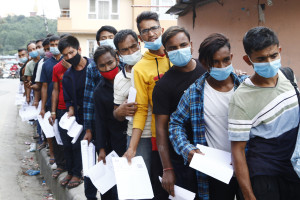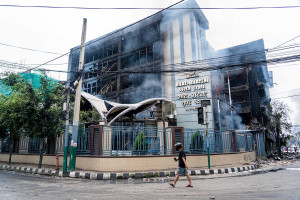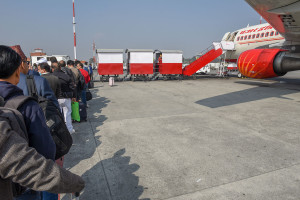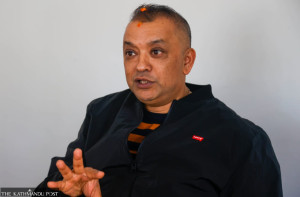Money
Nepal to clock 5pc growth
The International Monetary Fund (IMF) has come up with the most optimistic economic growth estimate for Nepal among multilateral institutions, projecting expansion of gross domestic product (GDP) by 5 percent in the current fiscal year.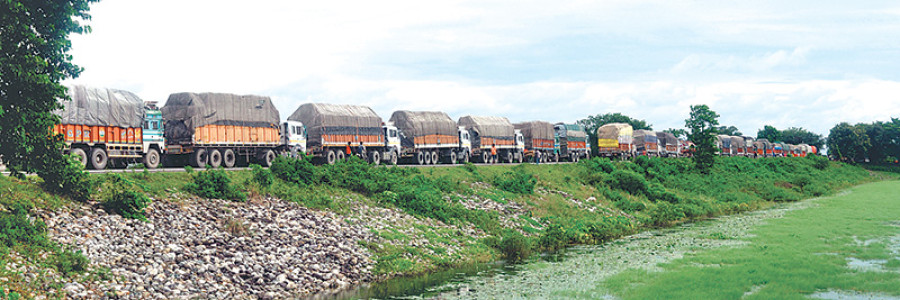
Rupak D. Sharma
The International Monetary Fund (IMF) has come up with the most optimistic economic growth estimate for Nepal among multilateral institutions, projecting expansion of gross domestic product (GDP) by 5 percent in the current fiscal year.
The forecast was made through its World Economic Outlook released on Tuesday evening.
The World Bank and the Asian Development Bank, two major multilateral institutions operating in Nepal, had recently projected Nepal’s economy to grow by 4.6 percent and 4.7 percent, respectively, in Fiscal Year 2017-18, which was far lower than the government’s estimate of 7.2 percent. The relatively optimistic growth projection of the IMF, which is known as a conservative growth forecaster, is an indication the economy will not perform as badly as many had thought.
“There is still considerable momentum in economic activity [in Nepal],” Geert Almekinders, IMF mission chief for Nepal, told the Post via e-mail. “Domestic demand is being spurred by expanding government spending and resilient remittances.”
Nepal’s economy had grown by 23-year high of 6.9 percent (at basic price and 7.5 percent at market price) in the last fiscal year. This had set the tone for higher economic growth for Nepal, which has seen growth stagnating at around 4 percent per year in the last 45 years.

Then the country was hit by floods in August, which caused widespread devastation in the Tarai, the country’s food basket.
This is one downside risk to growth, as it may hold back the agricultural sector, according to Almekinders.
Floods are expected to depress this year’s farm output, which makes a contribution of around 30 percent to the GDP. But good news is that losses will not be as severe as initially estimated.
The floods completely destroyed paddy planted on 25,000 hectares of land, according to the Ministry of Agricultural Development. Paddy was planted on 1.4 million hectares of land in this year’s peak rice plantation season, which starts in mid-June. This year’s paddy plantation area was lower than last year’s 1.6 million hectares. Lower plantation and destruction of the crop will hit rice output. Also, delay in plantation of paddy in some of the pockets of dominant rice growing districts, such as Jhapa, Morang, Saptari, Siraha and Sarlahi, will reduce productivity, according to Ram Krishna Regmi, an agricultural statistician and undersecretary at the Ministry of Agricultural Development.

“These factors are expected to lower paddy yields by around 3.8 percent to 5 million tonnes in the current fiscal year,” Regmi said. This is expected to affect the agricultural sector as paddy accounts for a fifth of the farm output.
Another headwind for the economy is likely to be low utilisation of the capital budget. As in the previous years, many infrastructure projects, including national pride projects, which consume a big chunk of capital budget, are not moving ahead at a desired pace. This is expected to restrain potential growth.
“Efforts should focus on strengthening the government’s capacity to plan, prioritise, and remove impediments to capital spending to support infrastructure investments....as medium-term [economic growth] outlook critically depends on progress in reforms, particularly with regard to strengthening key institutions and administrative capacity to overcome the chronic under-implementation of the budget and boost private investment and growth,” Almekinders said.
It is critical for Nepal to deliver high economic growth, as it has set an ambitious target of migrating to the grouping of middle-income countries by 2030.
For this, Nepal must improve investment climate, upgrade and build new transport network, generate more electricity to power the industrial sector, improve the quality of education and healthcare, and focus on human capital development.
These goals, experts say, are attainable, as political situation in the country is gradually improving following successful completion of local elections after a gap of almost two decades. The completion of local elections is being seen as the first step towards institutionalising the newly-embraced federal government system, which is expected to improve public service delivery and expedite decision-making process because of devolution of power from the centre to the local level.
“The process of fiscal decentralisation that has been initiated following local elections holds the potential for a major improvement in the delivery and quality of public services across the country,” Almekinders said.
However, experience in other countries suggests that such an outcome requires “autonomy and strong accountability of subnational governments, and a matching of the decentralisation of expenditure responsibilities with resources”, according to Almekinders.
“The establishment of a robust and sustainable framework of intergovernmental fiscal arrangements is therefore both urgent and essential for the success of federalism in Nepal, along with a major effort to build implementation capacity at the subnational level,” Almekinders added.
IMF’s projections for FY 2017-18
GDP growth 5pc
Inflation 6pc
Current account deficit 0.7pc of GDP




 11.12°C Kathmandu
11.12°C Kathmandu








